Beyond the manicured lawns and imported ornamentals that have become standard fare in suburban developments lies a more sustainable and rewarding approach to landscaping — the wildlife-friendly Florida garden.
In the subtropical paradise of Florida, where sunshine meets shoreline and pine flatwoods transition to cypress swamps, homeowners have a unique opportunity to transform their yards into vibrant sanctuaries for native wildlife.
As development continues to fragment natural habitats across the Sunshine State, residential gardens have become increasingly crucial corridors and refuges for butterflies, bees, birds, and other creatures that call Florida home.
By trading water-hungry turf and high-maintenance exotics for thoughtfully selected native plants, Floridians can create lush, low-maintenance landscapes that burst with color, reduce water consumption, and come alive with the flutter of wings and buzz of pollinators.
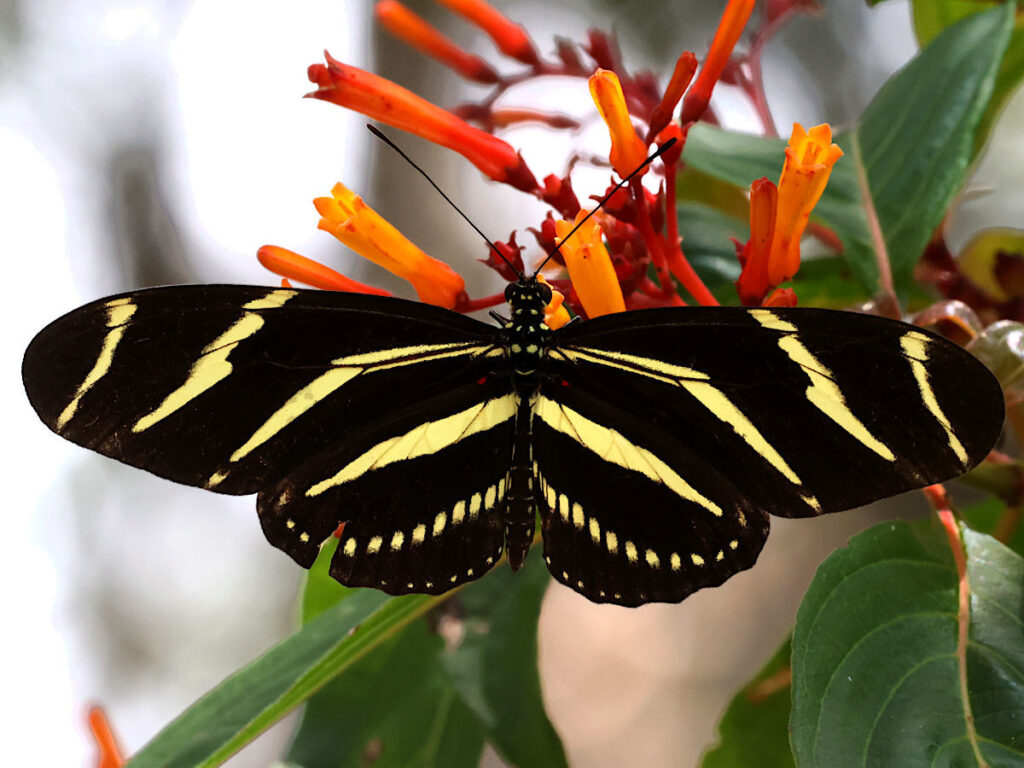
By peterwchen – https://www.inaturalist.org/observations/116522384, CC BY 4.0, Link
This transformation isn’t just beneficial for wildlife — it reconnects homeowners with Florida’s remarkable botanical heritage while solving common landscaping challenges. Native plants, having evolved in local conditions for thousands of years, naturally thrive in Florida’s sandy soils, humid summers, and periodic droughts without requiring chemical fertilizers or constant irrigation.
The result is a garden that demands less of your time and resources while offering more beauty and ecological value.
Why Florida Native Plants Are Essential for Wildlife
Florida’s native plants and wildlife share a complex relationship that has evolved over thousands of years. These plants aren’t just pretty additions to your landscape—they’re critical components of a functioning ecosystem that supports countless species of birds, butterflies, bees, and other wildlife. Let me show you why incorporating Florida native plants into your garden is so much more than a landscaping choice — it’s a meaningful contribution to wildlife conservation.
The Deep Ecological Connection
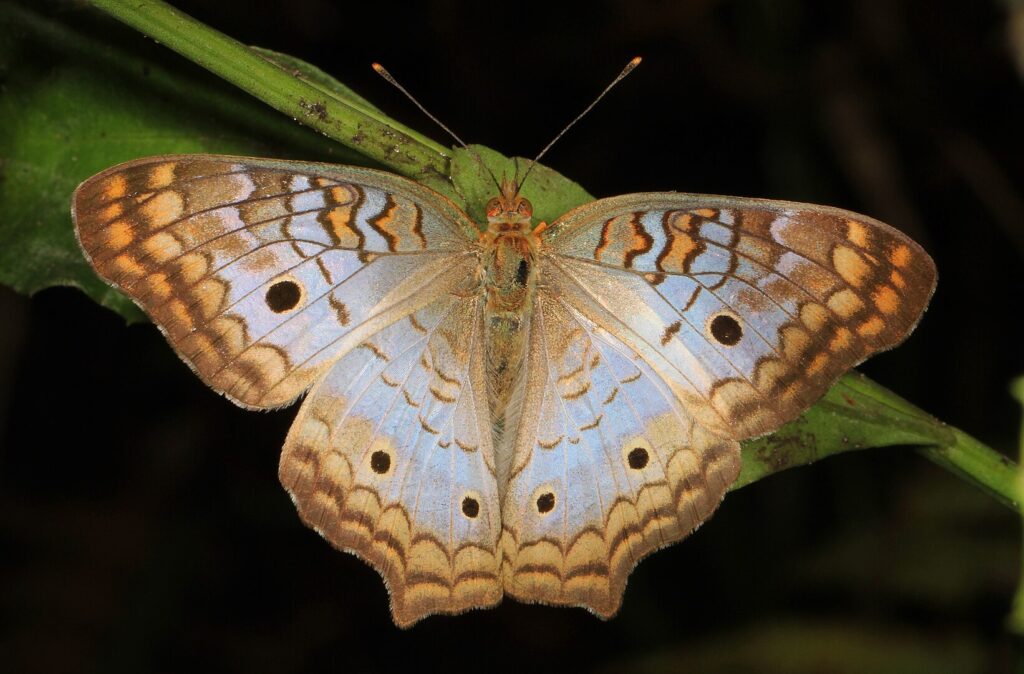
By Judy Gallagher – https://www.flickr.com/photos/52450054@N04/31170162900/, CC BY 2.0, Link
Florida native plants and local wildlife species evolved together, creating interdependent relationships that non-native plants simply cannot replicate. This co-evolution has created specialized connections that are fascinating to observe:
Host Plant Specificity
Many butterfly and moth species can only reproduce on specific native plants. The striking Zebra Longwing (Florida’s state butterfly) lays its eggs exclusively on native passionflower vines. Without these native plants, these beautiful creatures cannot complete their life cycle.
Nutritional Timing
Native plants produce nectar, seeds, fruits, and nuts precisely when local wildlife needs them most. This synchronization ensures that migratory birds find fuel during their journeys and that resident wildlife has food through changing seasons.
Recognition Factor
Our local birds, bees, and butterflies recognize native plants as food sources, while they may overlook exotic species entirely. Research shows that areas with native plants support 3-4 times more bird and butterfly species compared to landscapes with non-natives.
A Complete Support System for Birds
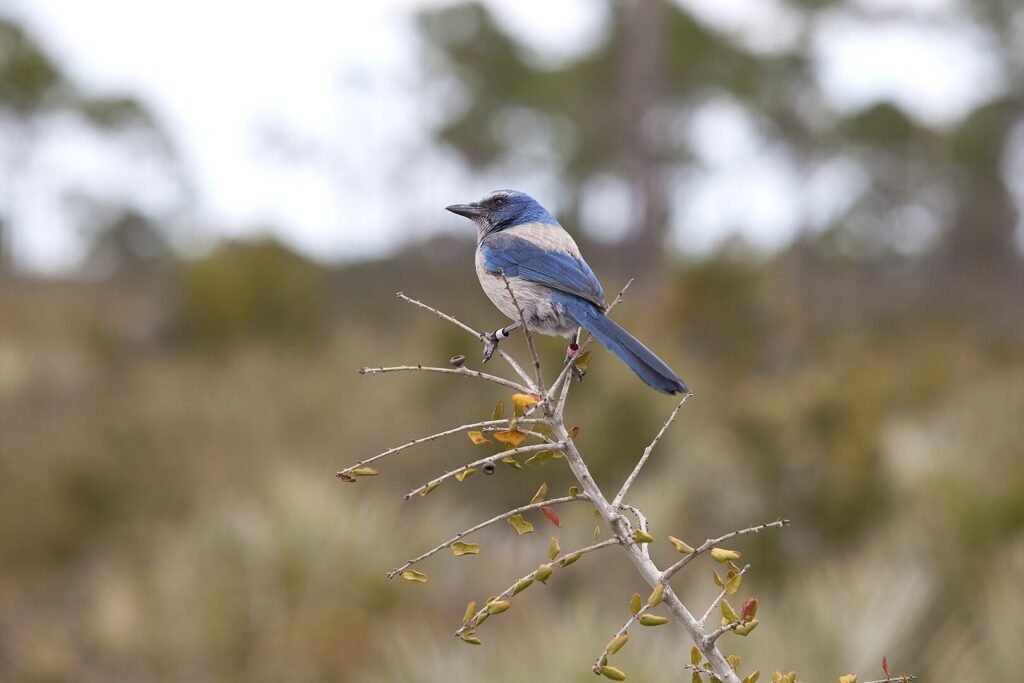
Creating a wildlife-friendly Florida garden provides birds with native plants for much more than just food:
Nesting Materials
The specific fibers, twigs, and other materials from native plants are what local birds have adapted to use for sturdy nest construction.
Protective Cover
Dense native shrubs like Wax Myrtle and Yaupon Holly provide essential protection from predators and harsh weather.
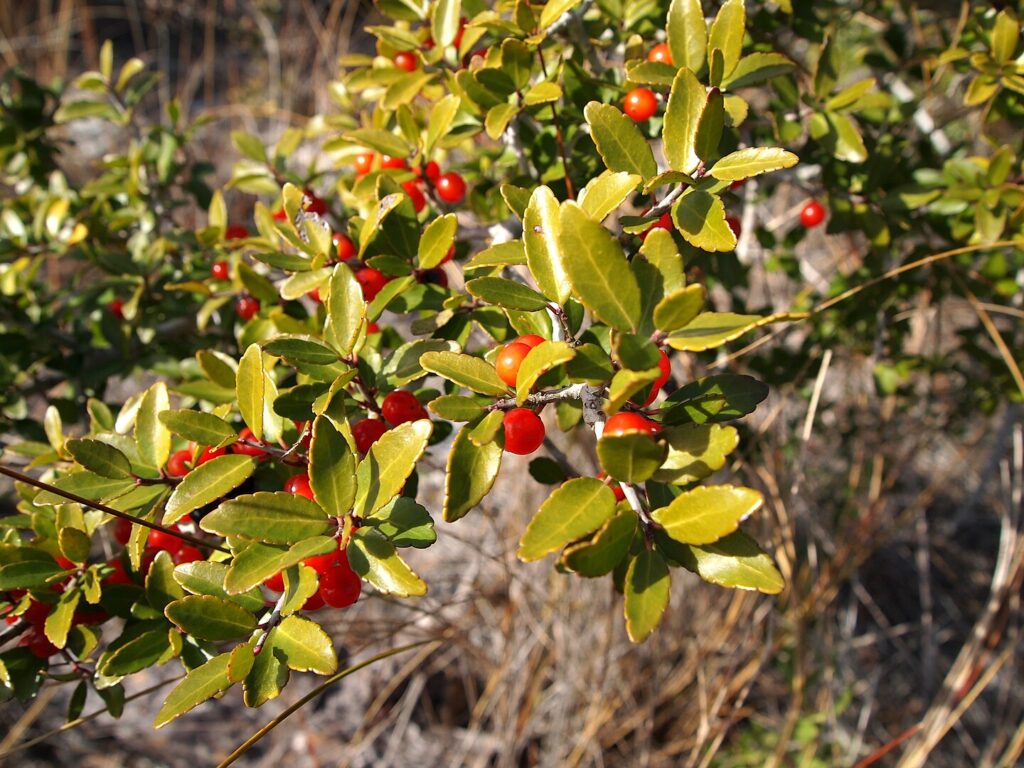
By Luteus – Own work, CC BY 3.0, Link
Food Web Support
Native plants host the insect larvae that are essential for feeding baby birds—even seed-eating birds require insects to feed their young. A single clutch of chickadees needs 6,000-9,000 caterpillars to fledge successfully!
Year-Round Resources
Florida native plants provide a succession of berries, seeds, and nuts throughout the year, supporting resident birds in all seasons.
Sustaining Florida’s Pollinators
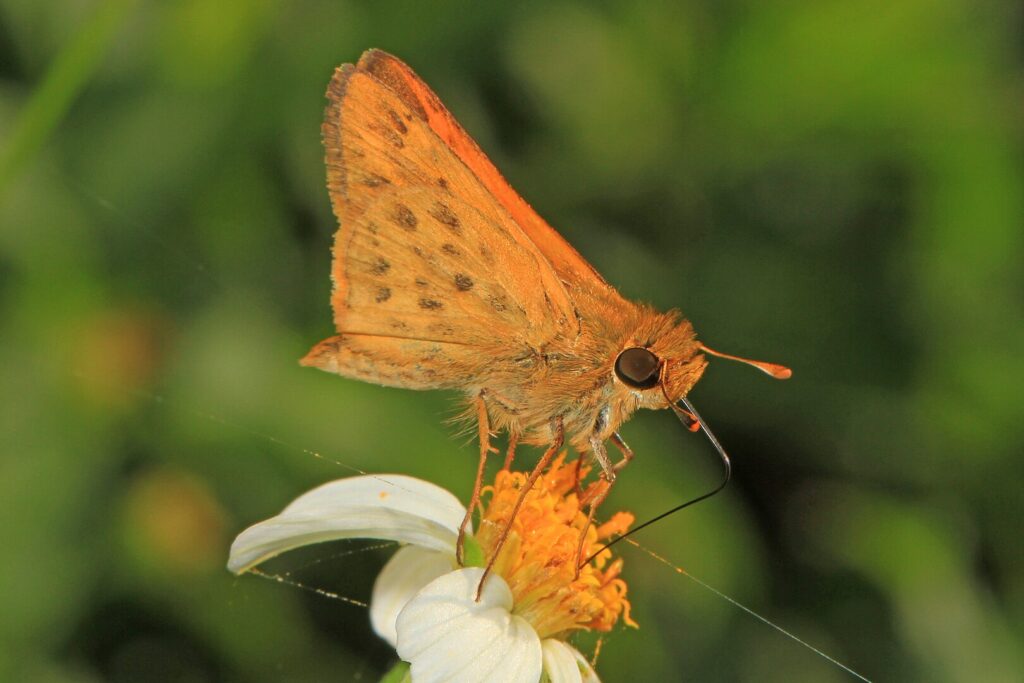
Florida’s native bees, butterflies, and other pollinators face numerous threats. Designing a wildlife-friendly Florida garden secures them an important refuge:
Specialized Relationships
Many of Florida’s 300+ native bee species have co-evolved with specific native plants, with mouthparts and behaviors adapted to particular flower shapes.
Complete Lifecycle Support
Native plants provide not just nectar, but also pollen, resin, leaves, and stems that pollinators need for various life stages.
Chemical Familiarity
Native pollinators recognize the chemical cues of native plants, helping them efficiently locate food sources.
Pesticide-Free Zones
Gardens with Florida natives typically require fewer pesticides, creating safe havens for declining pollinator populations.
Environmental Benefits Beyond Wildlife
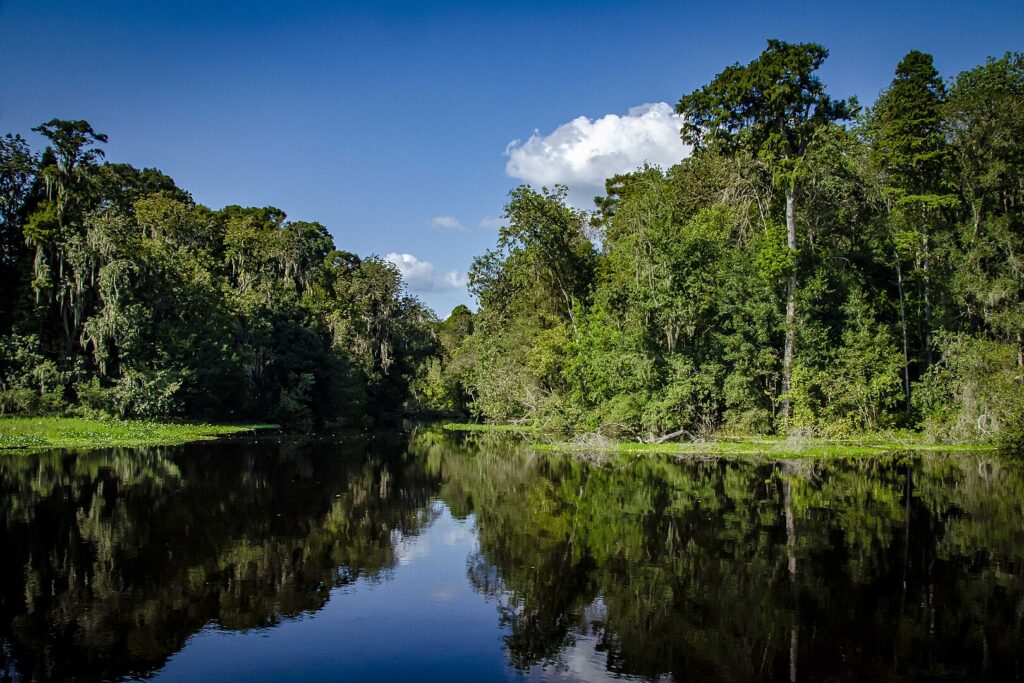
By Trish Hartmann from Tampa, Florida, USA – Hillsborough River, CC BY 2.0, Link
Growing a wildlife-friendly Florida garden with native plants creates a cascade of environmental benefits:
Water Conservation
Florida native plants are adapted to the local rainfall patterns, requiring up to 80% less irrigation once established compared to exotic landscaping.
Climate Resilience
Native plants have adapted to Florida’s unique conditions over millennia, making them more resilient to our extreme weather events, from hurricanes to occasional freezes.
Soil Health
The deep root systems of many Florida native plants improve soil structure, prevent erosion, and filter water before it reaches our precious aquifers.
Reduced Chemical Inputs
Native plants evolved with local conditions and typically don’t require the fertilizers and pesticides that exotic plants demand, keeping harmful chemicals out of our waterways.
Creating Living Corridors
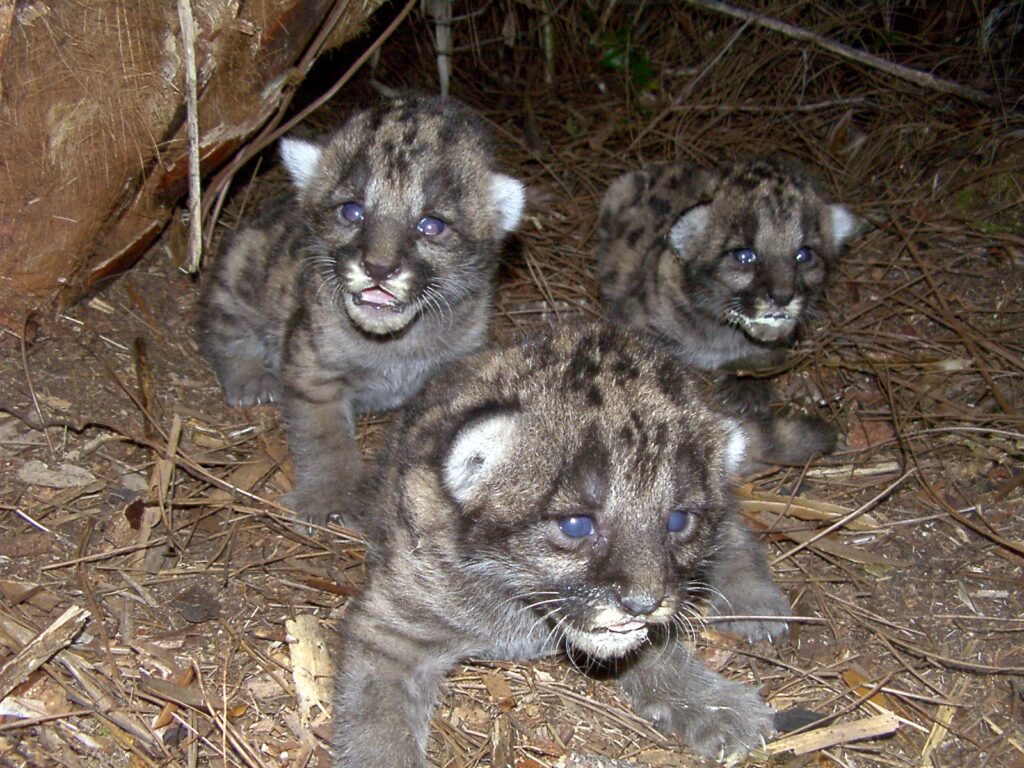
As natural habitats continue to fragment across Florida due to development, our gardens can provide crucial stepping stones for wildlife:
Urban Sanctuaries
Even small patches of native plants in urban and suburban areas create “pit stops” for migrating butterflies and birds.
Habitat Fragments
Collectively, our native gardens can connect remaining natural areas, allowing wildlife to move safely through developed landscapes.
Population Support
Native plant gardens can help maintain genetic diversity in isolated wildlife populations by allowing safe passage between habitat fragments.
Getting Started: Every Plant Matters

By Dinesh Valke from Thane, India – Hamelia patens, CC BY-SA 2.0, Link
The beauty of incorporating Florida native plants is that even small changes make a difference:
- A single native milkweed plant can support multiple monarch butterfly caterpillars
- One Firebush can provide nectar for dozens of hummingbirds during migration
- A few native grasses can supply nesting material for several bird families
By choosing Florida native plants, you’re not just creating a beautiful landscape—you’re restoring ecological functions that support countless forms of wildlife. Your garden becomes part of the solution to habitat loss, providing essential resources for the creatures that make Florida such a biologically rich and wonderful place to live.
Ready to transform your yard into a wildlife-friendly Florida garden? In this series of articles, “The Wildlife-Friendly Florida Garden,” we’ll guide you through selecting and incorporating the perfect Florida native plants for your specific conditions and wildlife goals.
The first step is understanding the various types of natural Florida environments, then assessing where your property fits in. This will help you choose native plants that require much less maintenence and fewer (or no) inputs once established.
Understanding Florida’s Plant Communities
One of the most fascinating aspects of gardening in Florida is the incredible diversity of natural ecosystems packed into our peninsula. As you begin planning your native garden, take time to discover which plant communities historically thrived in your area. This knowledge will guide you toward selecting plants that are perfectly adapted to your specific conditions.
Pine Flatwoods
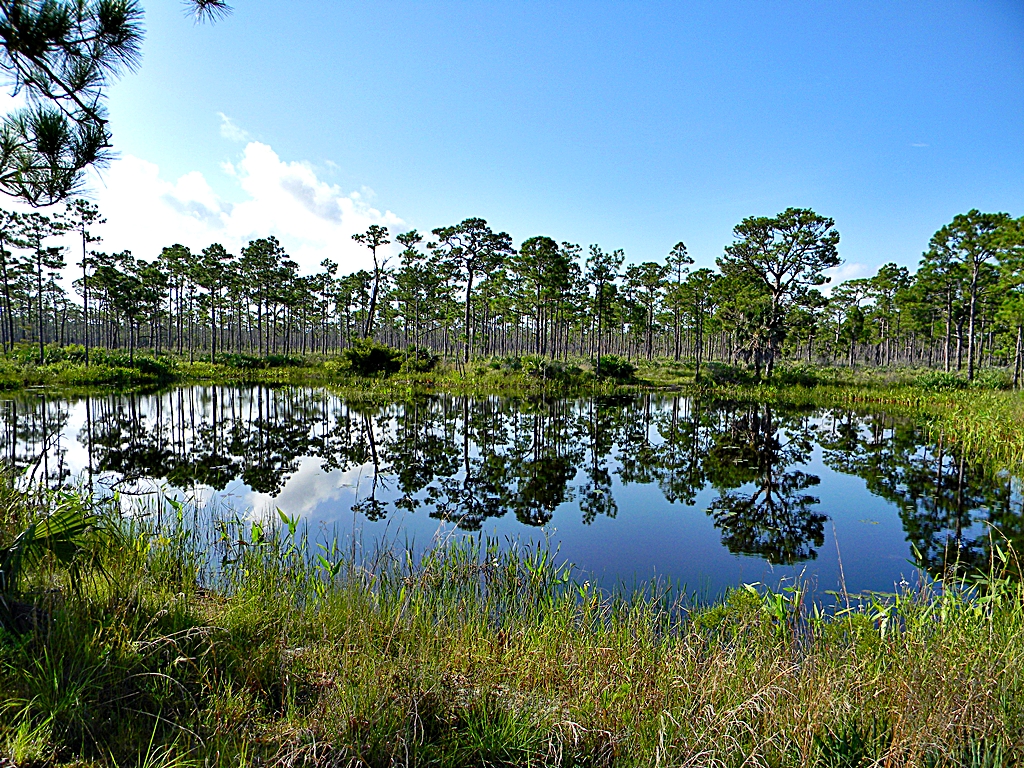
When you drive through Florida’s landscapes, you’ll notice distinct transitions between different natural communities. The towering pines and palmetto understory of Pine Flatwoods dominate much of Florida’s landscape.
These sunlit communities feature an open canopy of longleaf and slash pines stretching toward the sky, while beneath them, a dense carpet of saw palmetto creates shelter for wildlife.
Gallberry holly adds seasonal berries, and wiregrass forms the historical foundation for the natural fire cycles that once swept through regularly, keeping these ecosystems healthy and diverse.
Hammocks
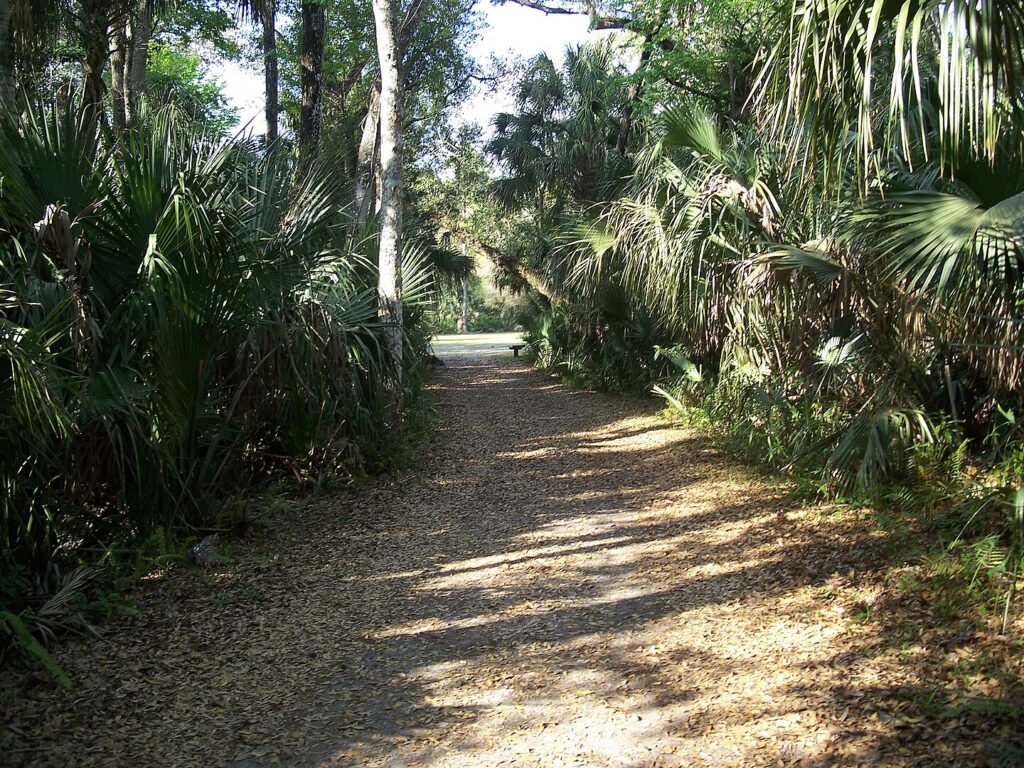
Venture into shadier areas, especially along river bluffs or ancient dune ridges, and you’ll discover the cool refuge of Hammocks — closed-canopy forests where magnificent live oaks and southern magnolias create a shaded sanctuary.
These magical spaces feel almost primeval, with red bay adding aromatic leaves to the forest floor and wild coffee shrubs producing berries beloved by birds. Here again, the adaptable saw palmetto thrives, but in a more stretched form as it reaches for filtered sunlight.
Sandhill

By NASA – https://images.nasa.gov/details/KSC-05pd2344http://mediaarchive.ksc.nasa.gov/detail.cfm?mediaid=27315 on the Wayback Machine at the Wayback Machine, Public Domain, Link
If your property features well-drained, elevated terrain, you might be living in former Sandhill habitat. These dry, rolling landscapes historically supported widely spaced longleaf pines standing like sentinels above drought-tolerant turkey oaks.
The sandy soil between trees isn’t barren but filled with specialized plants like wiregrass and the aromatic Florida rosemary, which releases its scent on warm days. These areas feel open and breezy, with plenty of sunlight reaching the ground.
Scrub
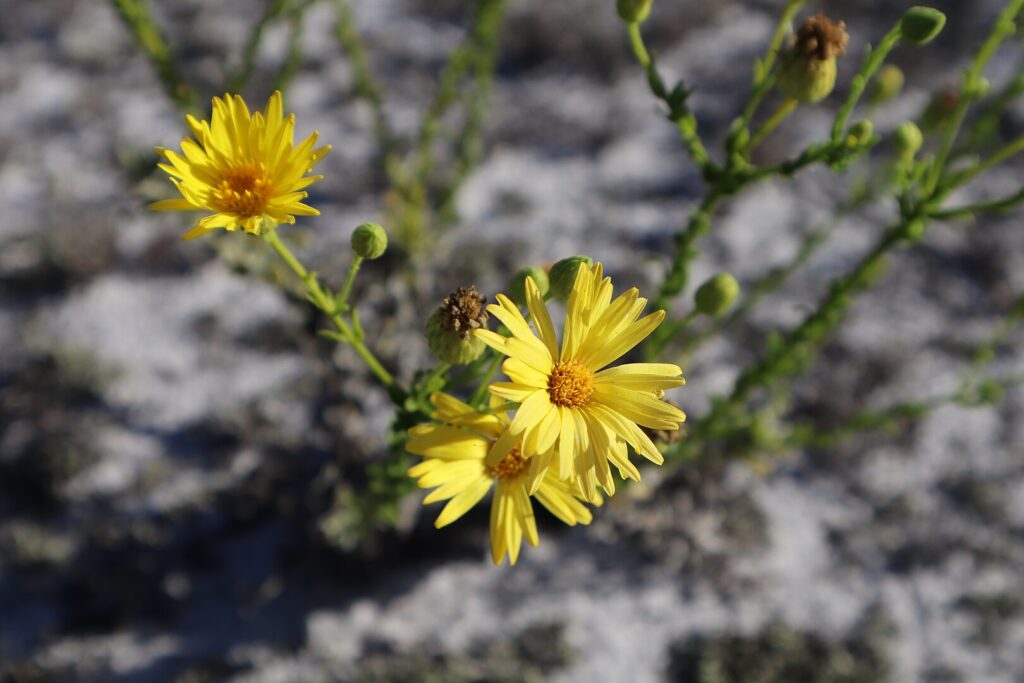
In areas with even more challenging conditions, particularly ancient dune systems with brilliantly white sand, you might find yourself in Scrub habitat — Florida’s version of desert.
This harsh but beautiful environment features specialized plants like sand pine and several scrub oak species that rarely grow tall. The drought-adapted rosemary (different from culinary varieties) and scrub palmetto hug the ground, conserving every drop of moisture.
Scrub may look sparse, but it’s home to some of Florida’s rarest and most specialized plants and animals.
Freshwater Wetlands

Where water meets land, you’ll discover Freshwater Wetlands with their incredible diversity. From marshes with emergent vegetation to the cathedral-like cypress swamps, these areas pulse with life.
Towering bald cypress trees with their distinctive “knees” create architecture unlike anywhere else, while red maples add flashes of color in spring and fall.
At water’s edge, swamp lilies, native iris, and pickerelweed offer brilliant blooms that attract pollinators and add visual drama.
Coastal Communities
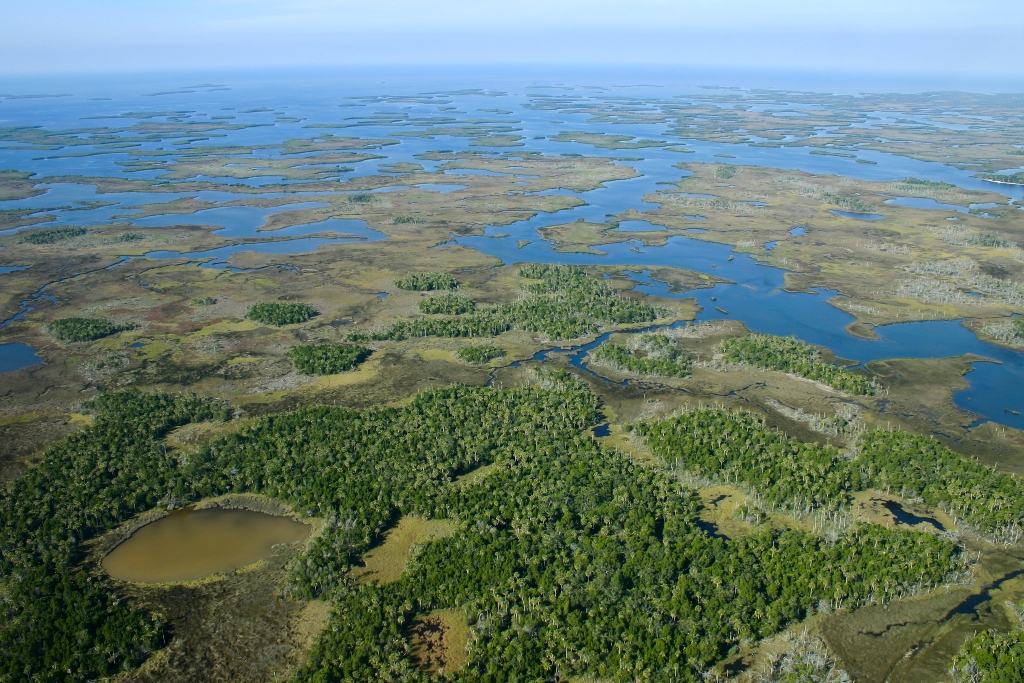
The coastal marsh at Chassahowitzka NWR, located approximately 65 miles north of St. Petersburg, FL. It is home to a multitude of species, including the endangered West Indian manatee.
Aerial of Chassahowitzka National Wildife Refuge, Public Domain, Link
Finally, along our extensive coastlines, specialized Coastal Communities have evolved to handle salt spray, storm surge, and shifting sands. On dunes, sea oats wave their golden seedheads while their extensive root systems hold sand in place.
The sprawling railroad vine sends purple morning-glory-like flowers across the sand, while inland from the immediate shoreline, graceful muhly grass creates a pink haze in fall.
In areas with more protection, buttonwood trees establish, creating the transition to mangrove systems in southern regions.
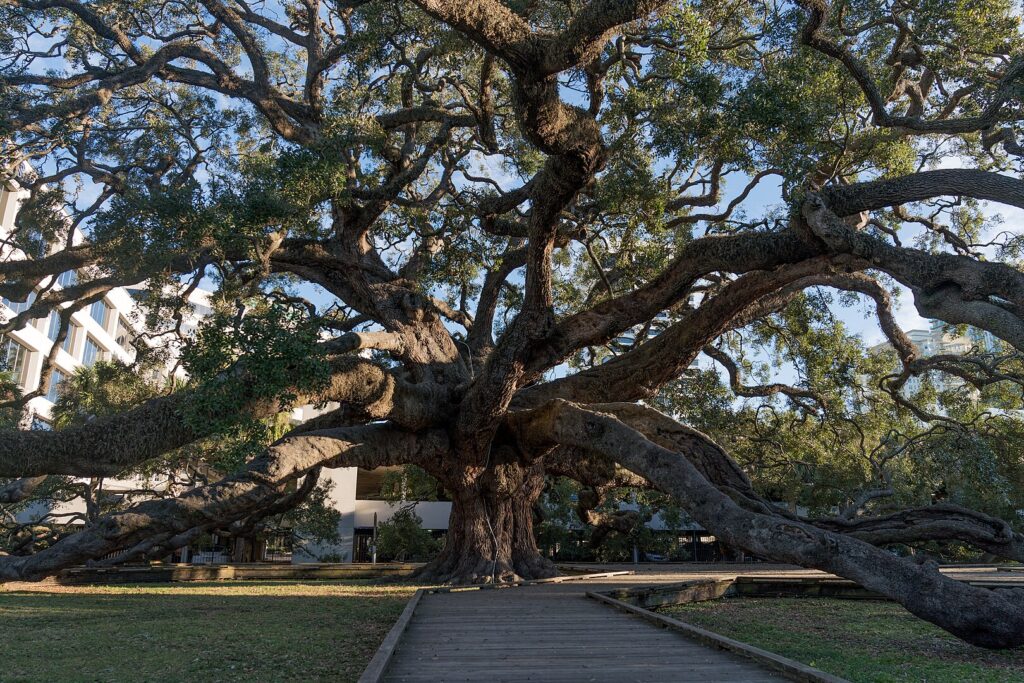
By Lorie Shaull from Washington, United States – Treaty Oak, Jacksonville Florida, CC BY-SA 2.0, Link
By recognizing which of these communities originally covered your property, you gain invaluable insight into which plants will thrive in your particular conditions. Take a weekend to visit nearby natural areas that preserve these ecosystems, observe how plants grow together, and notice the subtle environmental factors that shape each community.
Your garden will be more successful and authentic when you work with these natural affinities rather than against them.
Planning Your Wildlife-Friendly Florida Garden
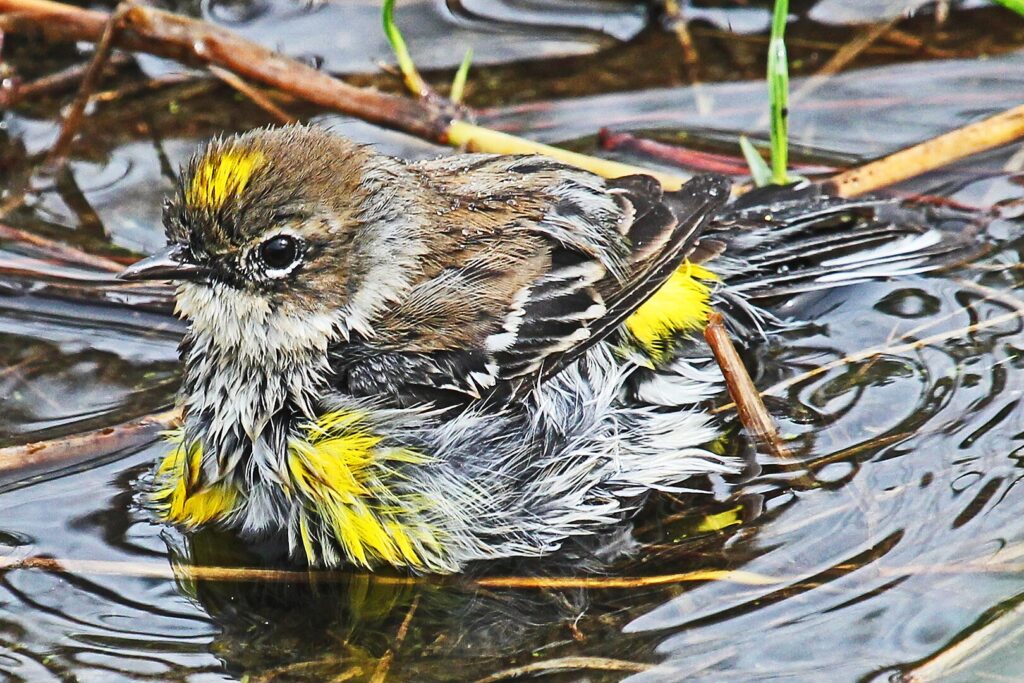
By Judy Gallagher – https://www.flickr.com/photos/52450054@N04/8265147867/, CC BY 2.0, Link
Creating a garden that welcomes Florida’s incredible diversity of wildlife begins with thoughtful planning. Unlike conventional landscaping that often prioritizes appearance alone, a wildlife-friendly Florida garden works with nature’s patterns to create a functional habitat.
With Florida’s unique climate and ecosystems, your garden can become a thriving sanctuary for birds, butterflies, bees, and countless other creatures while also providing you with endless joy and discovery.
Let’s explore how to transform your outdoor space — whether it’s a spacious yard or a modest patio—into a haven for wildlife.
Assessing Your Site Conditions
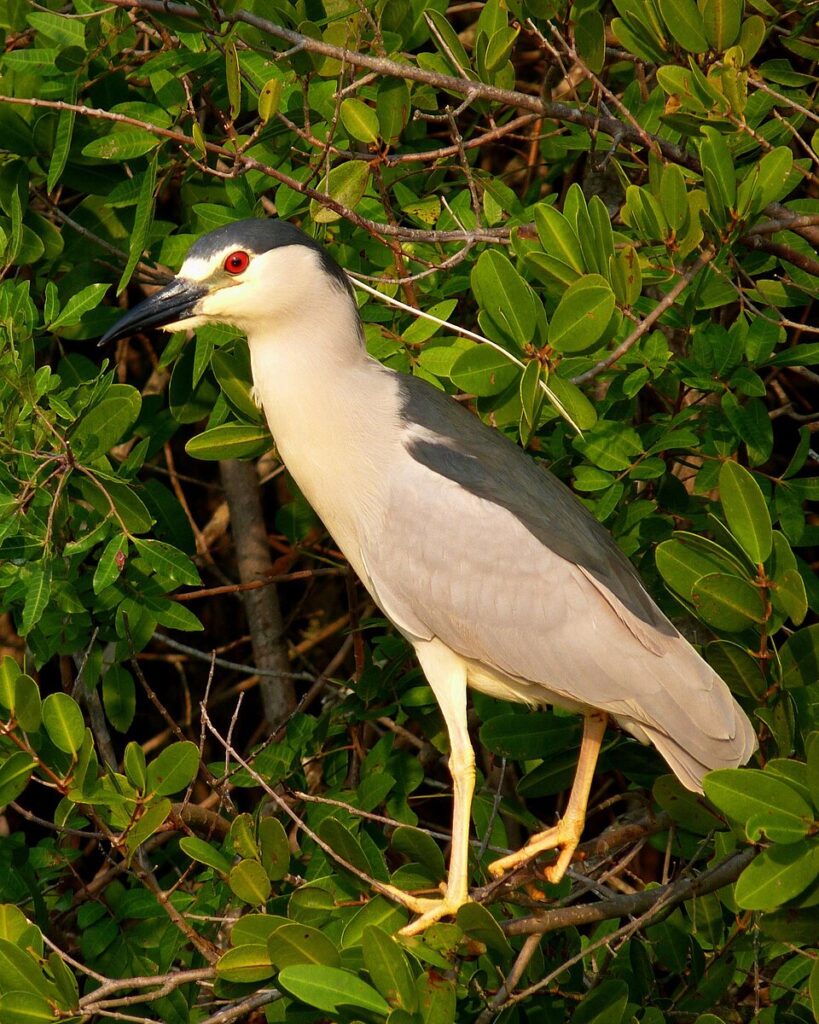
The foundation of any successful Florida garden lies in understanding what you’re working with. Florida’s environment varies dramatically from the oak-shaded clay soils of the Panhandle to the rocky limestone of the Keys. Your specific site conditions will determine which native plants will thrive in your wildlife-friendly Florida garden.
Assess Sunlight Exposure
Begin by mapping your garden’s sunlight patterns throughout the day. Florida’s intense sunshine can be both a blessing and a challenge — areas that receive full sun (6+ hours daily) will support different plants than those in partial shade (3-6 hours) or full shade (less than 3 hours).
Take notes during different seasons, as the sun’s path changes significantly from summer to winter, especially in North and Central Florida. Remember that “full sun” in many gardening references often assumes northern light conditions.
In Florida’s intense summer sun, many “full sun” plants actually appreciate afternoon shade.
Test Your Soil
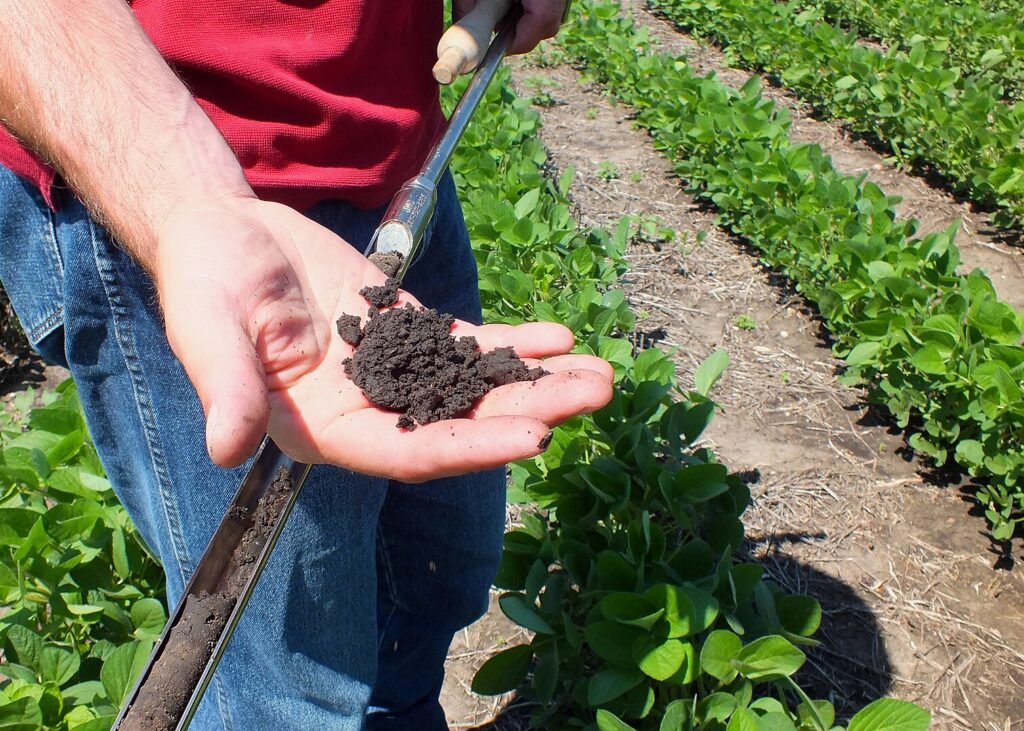
Next, examine your soil by digging small test holes in different areas of your garden. Florida soils range widely, from the rich loamy soils of old river bottoms to pure sand with little organic matter.
Squeeze a handful of moist soil—if it holds together but crumbles when poked, you have loamy soil; if it falls apart completely, you’re working with sand; if it sticks together in a ball, clay is present.
Don’t be discouraged by challenging soil conditions—there are Florida native plants adapted to every soil type.
Check the Drainage
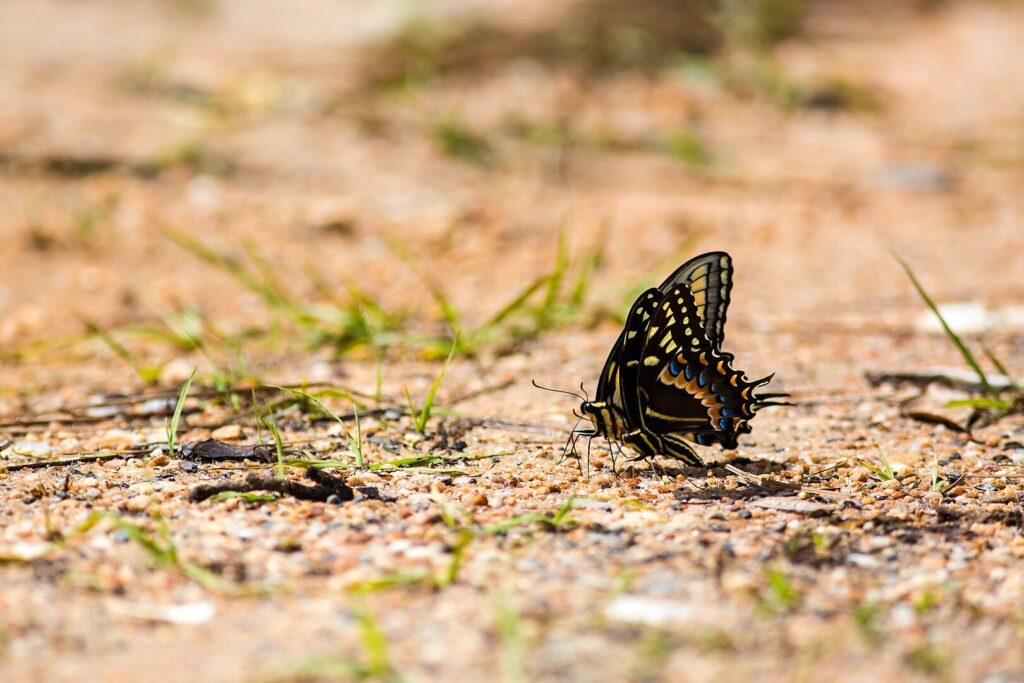
Drainage patterns reveal critical information about your landscape. After a typical Florida downpour, note where water pools and where it drains quickly.
Areas that remain soggy for days might be perfect for wetland species like swamp lilies or blue flag iris. Consistently dry spots call for drought-adapted natives like coontie or muhly grass.
In many Florida developments, drainage has been altered by construction, creating both excessively dry and surprisingly wet microclimates within the same yard.
Everything in Context
Consider also your broader environmental context. Coastal gardens face salt spray and potential storm surge, while inland areas might experience more extreme temperature fluctuations.
North Florida gardeners should note that cold snaps can damage tropical species, while South Florida gardeners rarely need worry about frost. However, they do have to contend with nearly year-round growing conditions that can make some plants grow too vigorously.
As you evaluate your site, remember that “challenges” often present opportunities for specialized native plant communities. That soggy corner might become a thriving rain garden, while that baked, sandy spot could showcase beautiful beach dune species.
By working with your site’s natural conditions rather than fighting them, you’ll create a more sustainable landscape that requires less intervention to maintain.
Identifying Existing Wildlife Visitors
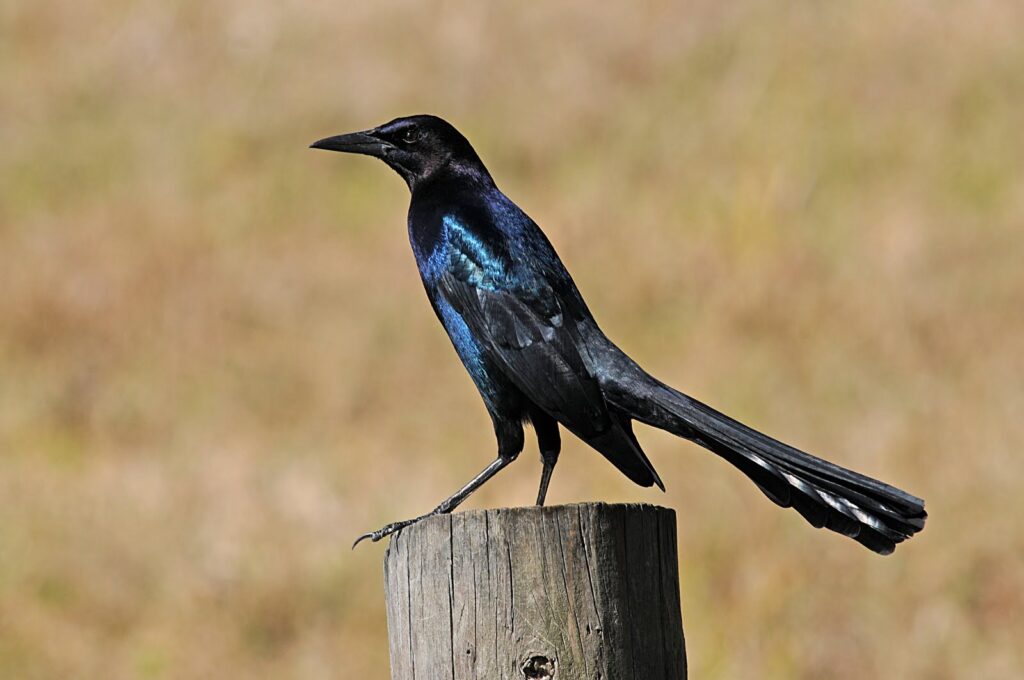
By Connie Denyes – Picasa Web Albums, CC BY 3.0, Link
Your garden likely already attracts some wildlife, even if you haven’t noticed it. Spending time observing current visitors provides valuable clues about potential habitat improvements.
This will help you measure your garden’s increasing biodiversity as you add native plants to your wildlife-friendly Florida garden.
Set aside regular observation periods—perhaps 15 minutes in the early morning and again at dusk when wildlife activity often peaks. Sit quietly with a notebook or use your phone to record what you see.
Tracking Birds
Note which birds visit, where they perch, what they seem to eat, and any patterns in their behavior. Are cardinals searching for seeds under your shrubs? Are woodpeckers investigating your trees for insects?
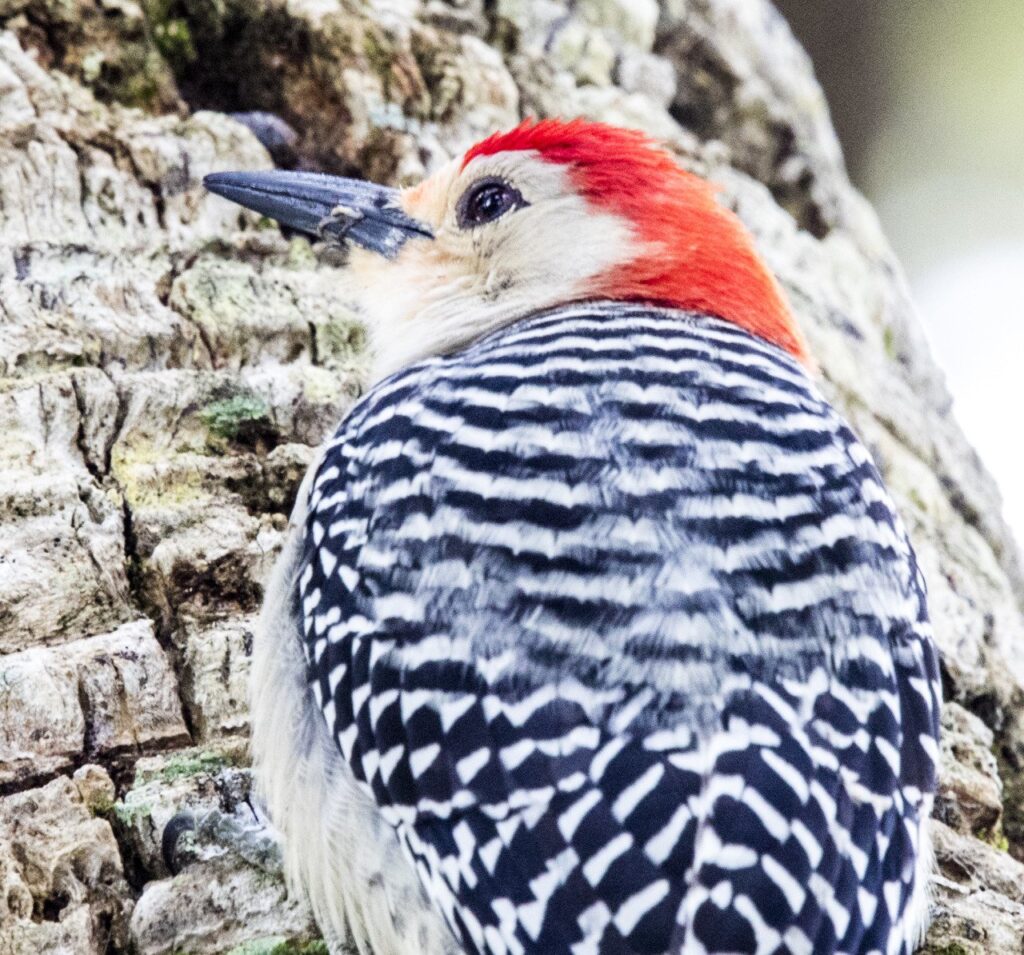
These observations reveal valuable information about what’s already working in your garden.
I’ve found the Merlin App for Cornell University invaluable for identifying and logging visiting birds by song. It’s especially useful if you have poor or aging eyesight.
Butterfly Species
Look beyond birds to notice butterfly species that visit your garden and which plants attract them. In Florida, we’re fortunate to host both year-round resident butterflies and seasonal migrants like monarchs.
Different butterfly species require different host plants for their caterpillars—monarchs need milkweed, giant swallowtails lay eggs on citrus and wild lime, and gulf fritillaries seek out passionflower vines.
Identifying which butterflies already visit helps you select appropriate host plants to complete their lifecycle.
Herps, Amphibians, and Mammals, Oh My!
Don’t overlook less obvious wildlife — lizards sunning on walls, tree frogs calling after rain, bees visiting native flowers, even the tracks of nocturnal visitors like possums or raccoons.
And don’t forget the squirrels.
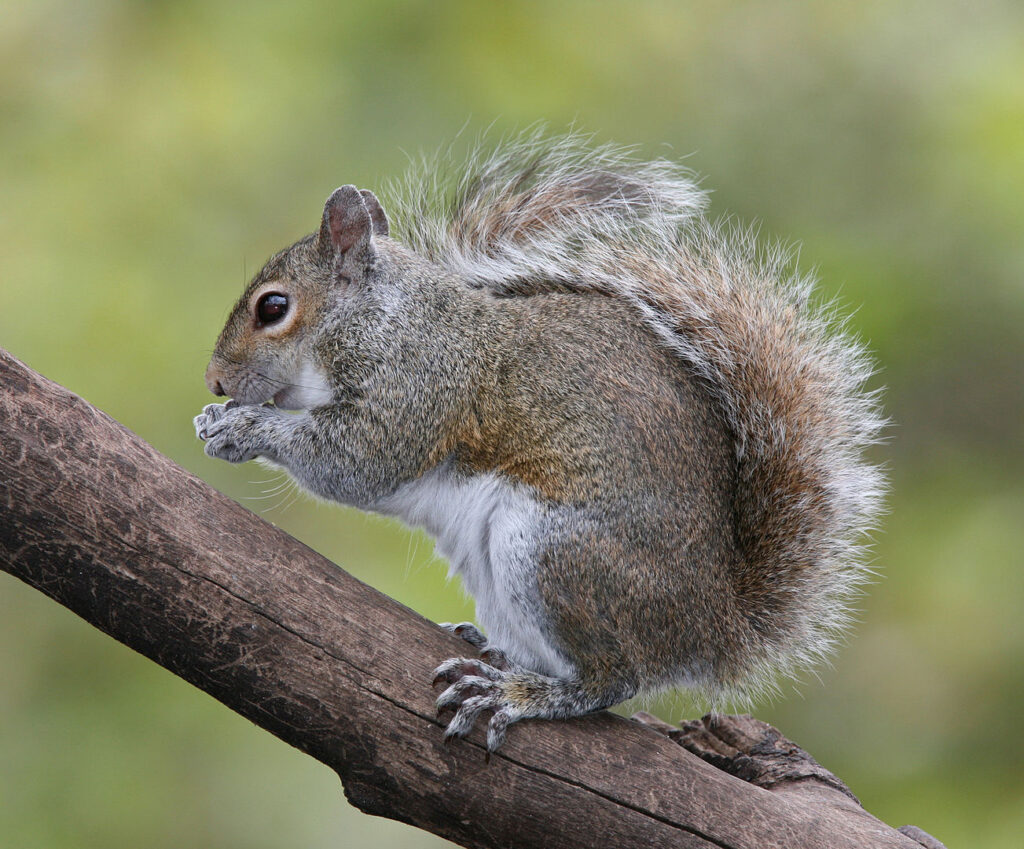
By BirdPhotos.com – BirdPhotos.com, CC BY 3.0, Link
Each creature plays a role in your garden’s ecosystem. Florida’s native lizards, for instance, consume countless pest insects, while bats (if you’re lucky enough to have them visit) can devour thousands of mosquitoes nightly.
Consider installing a simple wildlife camera if your budget allows — these inexpensive devices reveal surprising nighttime visitors you might otherwise miss. Many Florida gardeners are amazed to discover flying squirrels, foxes, or owls utilizing their space after dark.
As you identify current wildlife, research their specific needs. The Cornell Lab of Ornithology website provides detailed information about bird preferences, while the Florida Native Plant Society and Xerces Society offer resources about butterfly and pollinator requirements.
Understanding what attracts current visitors helps you strategically enhance habitat to invite even greater diversity.
Creating a Year-Round Food Supply
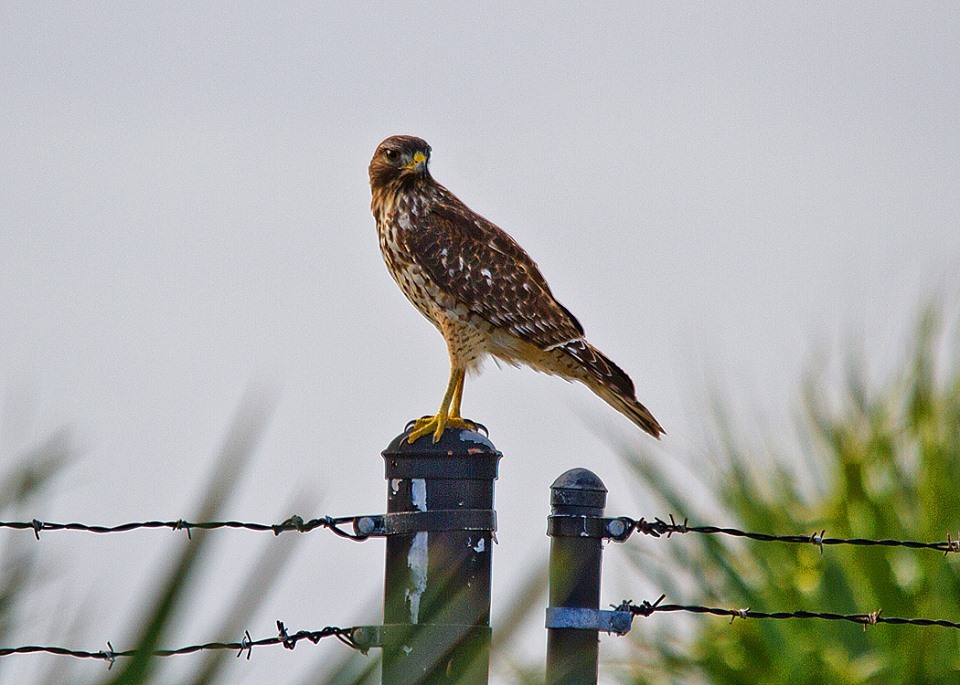
Florida’s mild climate allows us to provide food for wildlife throughout the year, but thoughtful planning is necessary to ensure continuous offerings.
Unlike colder states where wildlife feeding often focuses on winter months, Florida’s wildlife needs nutrition during all seasons, particularly during nesting and migration periods.
Begin by considering the full calendar year and planning for seasonal succession of flowers, fruits, and seeds. Early-blooming natives like Walter’s viburnum and red maple provide crucial nectar for emerging bees and butterflies in late winter/early spring when few other food sources exist.
Spring
Spring migration brings waves of birds passing through Florida, many exhausted from long journeys and needing energy-rich foods. Native cherries, blueberries, and early-fruiting shrubs support these travelers.
Summer
Summer brings nesting season, when parent birds need protein-rich insects to feed their young. Native plants support substantially more insect life than non-natives—a single oak tree can host over 500 species of caterpillars, essential food for nestlings.
Summer-flowering natives like firebush, scarlet sage, and wild petunias attract pollinators while summer-fruiting beautyberry and elderberry feed fruit-eating birds.
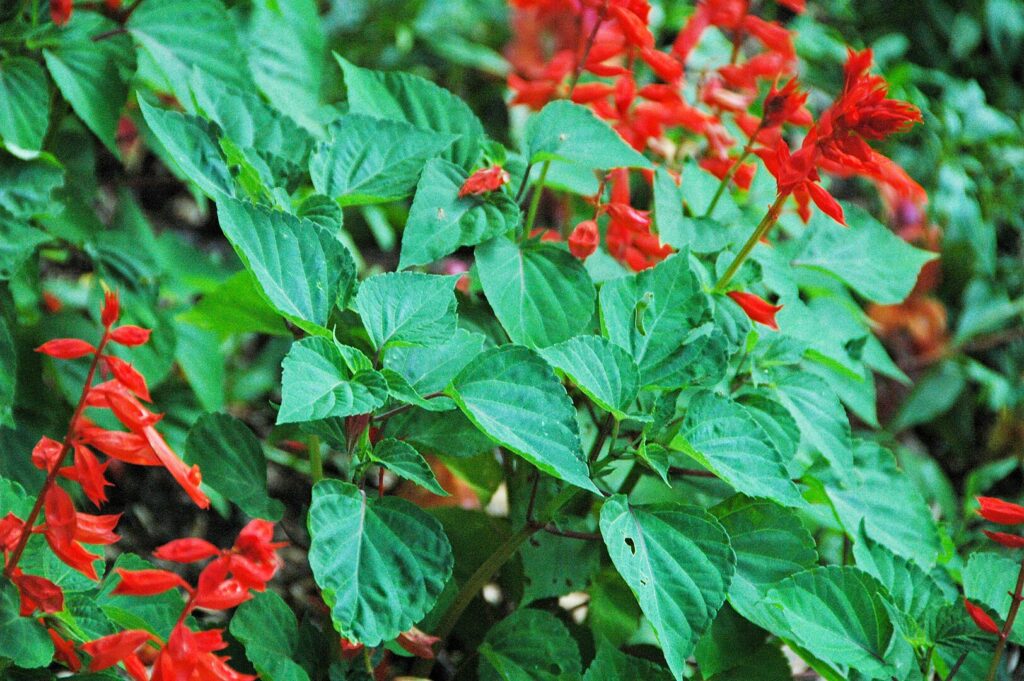
Autumn
Fall migration sees another wave of birds moving through Florida, many stopping to refuel before crossing the Gulf of Mexico. Plants with fall berries like wax myrtle, holly, and Simpson’s stopper provide critical energy for these journeys.
Winter
Even in winter, maintaining seed-producing native grasses and allowing flower heads to remain on plants feeds resident birds like cardinals and sparrows.
You can even plant native Florida vegetables for birds and small mammals, like Everglades tomatoes.
Create planting combinations that ensure something is always flowering or fruiting. For example, pair spring-blooming coral honeysuckle with summer-blooming firebush and fall-fruiting beautyberry.

Consider the different feeding guilds of wildlife: nectar-seekers (hummingbirds, butterflies), seed-eaters (cardinals, finches), fruit-eaters (mockingbirds, waxwings), and insect-eaters (warblers, wrens). A diverse garden provides for all these groups.
Remember that “messy” areas often provide the most food. Leaving seedheads on plants rather than deadheading, allowing leaf litter to accumulate under shrubs, and preserving dead wood where safe all support food webs.
A perfectly manicured garden may look neat to human eyes but offers little for wildlife to eat. Finding a balance between human aesthetics and wildlife needs often means keeping “wild” areas in less visible parts of the garden while maintaining more groomed spaces near living areas.
Incorporating Water Sources and Shelter Elements
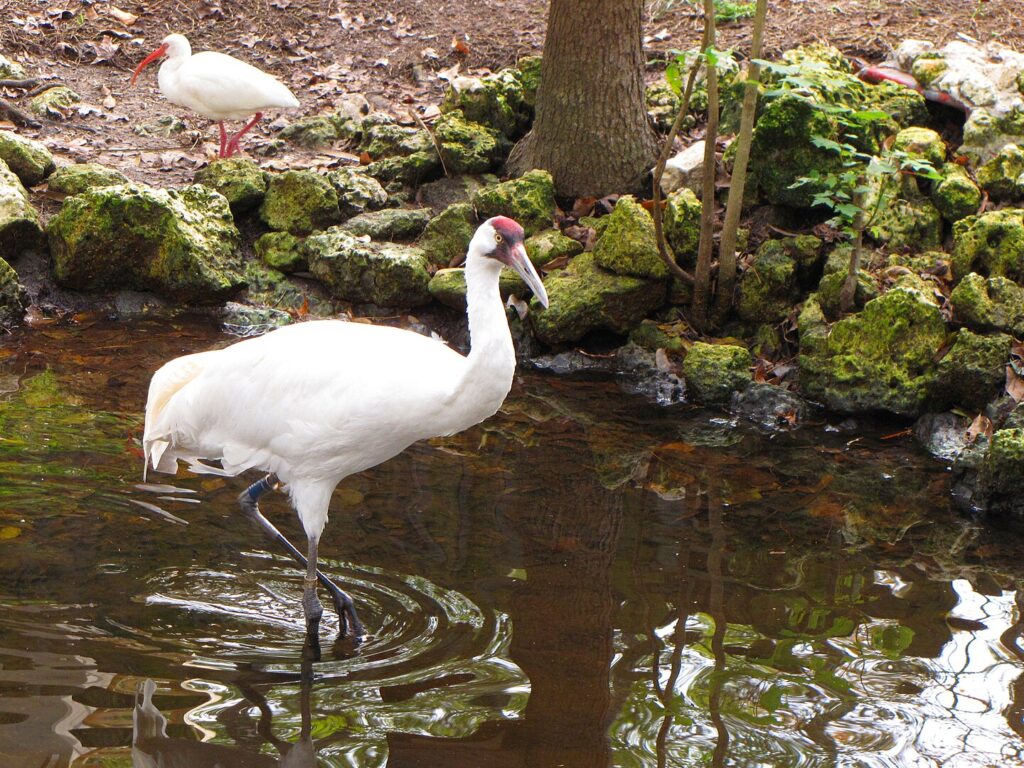
Water Features
Water is essential for Florida wildlife, even in our humid climate. Natural rainfall may seem abundant during summer storms, but it quickly drains through sandy soils or evaporates during hot weather.
Providing reliable water sources dramatically increases your garden’s wildlife appeal and biodiversity.
Bird baths offer the simplest solution — choose shallow models with rough-textured basins that allow secure footing. Place them where birds can easily spot approaching predators, ideally near (but not directly under) shrubs or trees that provide quick escape routes.
In Florida’s climate, refresh water frequently to prevent mosquito breeding and algae growth. Adding a small solar-powered bubbler creates moving water that birds find irresistible and can be heard from a distance.
For butterfly-specific water sources, create “puddling stations” by filling shallow dishes with sand, adding a few mineral-rich rocks, and keeping them consistently moist.
Male butterflies particularly seek these mineral sources. Place puddling stations in sunny, protected locations near nectar plants.
- 🦋【Butterfly Puddler Garden Decoration】This uniquely designed butterfly watering station is not only a beautiful addition to the garden, but also an ideal choice for those who love nature and wildlife!
More ambitious gardeners might consider small ponds with graduated depths and native aquatic plants. Even a container water garden on a patio can support native miniature water lilies and attract dragonflies.
Whatever your water feature, ensure it includes easy exit routes for creatures that might fall in — partially submerged rocks or branches allow wet visitors to climb out safely. I’ve fished more lizards than I’d like to admit from a container pond.
Shelters for a Wildlife-Friendly Florida Garden
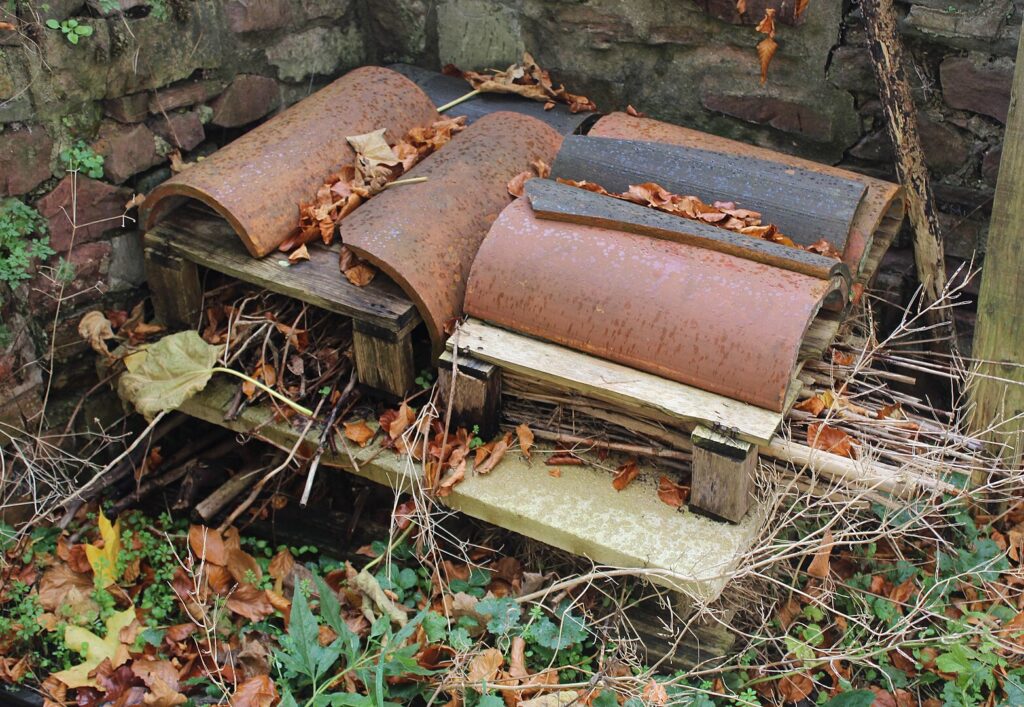
Shelter proves equally important as food and water in supporting wildlife. Florida’s intense sun, heavy rains, and occasional cold snaps make protective cover essential.
Native shrubs planted in groups create ideal shelter, especially those with dense branching patterns like wax myrtle, Walter’s viburnum, and Simpson’s stopper. These multi-stemmed shrubs provide nesting sites, roosting spots during harsh weather, and protection from predators.
For ground-dwelling creatures like toads, lizards, and beneficial insects, incorporate cover at ground level. Partially buried logs, small rock piles in sunny spots, and areas of undisturbed leaf litter create microhabitats for these valuable garden allies.
In Florida’s hot climate, these cool, moist retreats prove essential during midday heat. Keep some areas of your garden unmulched and lightly scratched to provide nesting sites for ground-dwelling native bees, which pollinate many of our native plants.
Snags—standing dead trees or large branches—offer premium wildlife housing if they can be safely maintained. Over 40 species of Florida birds nest in tree cavities, and many cannot excavate their own.
Woodpeckers create holes that are later used by bluebirds, titmice, and screech owls. If complete snags aren’t practical, consider installing nesting boxes specifically designed for native cavity-nesting birds.
Remember that some of Florida’s most beneficial wildlife needs shelter year-round. Leaving ornamental grasses and perennial stems standing through winter provides hibernation sites for many butterflies and beneficial insects.
Queen butterflies, for instance, often overwinter in bunch grasses, while native bees may hibernate in hollow plant stems.
Designing for Different Wildlife Needs

By Joe Schneid, Louisville, Kentucky – Own work, CC BY 3.0, Link
Successful wildlife gardens recognize that different creatures have distinct and sometimes conflicting requirements. Thoughtful design accommodates this diversity while creating a cohesive, attractive landscape.
Begin by envisioning your garden as a series of connected habitat zones. The classic wildlife garden includes areas for feeding, nesting, resting, and raising young, but within each of these categories lie important distinctions.
For instance, nectar-feeding hummingbirds prefer different flowers than do butterflies, while seed-eating birds require different plants than fruit-eaters.
Plan Your Wildlife-Friendly Florida Garden in Layers
Consider vertical layering in your design. A mature wildlife garden includes plants of varying heights: canopy trees, understory trees, tall shrubs, low shrubs, perennials, and groundcovers.
Each layer hosts different wildlife species — warblers might feed in upper tree canopies while towhees scratch in leaf litter below. Even in small gardens, including multiple vegetation layers maximizes habitat value.
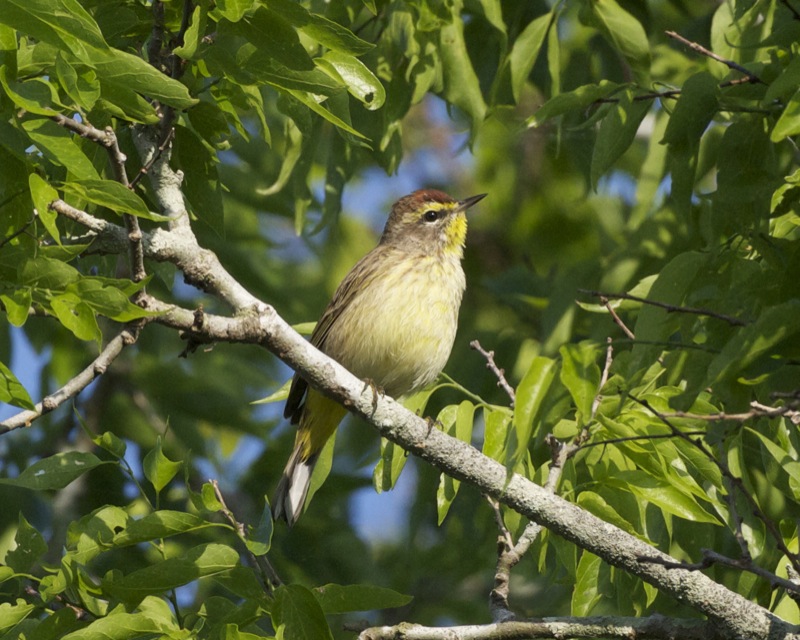
By Lip Kee from Singapore, Republic of Singapore – 690V0247.jpg, CC BY-SA 2.0, Link
Create distinct microhabitats within your overall design. A sunny butterfly garden might transition to a shaded woodland garden, followed by a small ephemeral wetland in a low spot.
These varied conditions support different plant communities and, consequently, different wildlife. Even contradictory needs can be accommodated through thoughtful placement — sun-loving lizards might bask on rocks adjacent to a cool, moist area hosting Florida’s native woodland wildflowers and the creatures that depend on them.
Seasonal Adaptations
Plan for seasonal changes in wildlife behavior. Many birds require open areas for courtship displays in spring but seek dense cover when molting in late summer.
Butterflies need full sun for basking during cool mornings but appreciate dappled shade during intense midday heat. Designing areas with seasonal flexibility helps wildlife adapt to changing conditions.
Consider specific adaptations for signature Florida species. Purple martins, for instance, require specially designed housing placed in open areas, while zebra longwing butterflies — our state butterfly — need passionflower vines for their caterpillars and partially shaded areas for the adults.
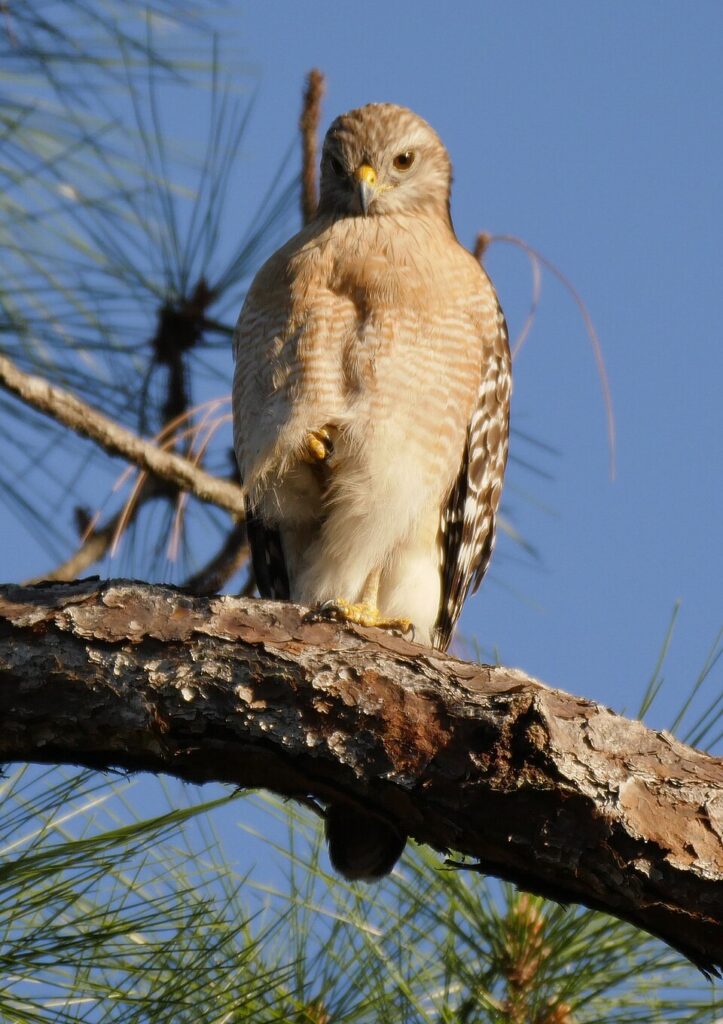
Learning the particular requirements of wildlife you especially wish to attract allows you to design with their needs in mind.
Incorporate “edges” where different habitat types meet—these transition zones often support the greatest biodiversity. The area where your taller shrubs meet an open wildflower garden, for example, creates edge habitat particularly attractive to birds like cardinals and towhees that prefer brushy margins.
Finally, consider connectivity between habitat elements. Wildlife needs to move safely between resources—from nesting areas to feeding grounds to water sources.
Creating corridors of vegetation rather than isolated “habitat islands” allows creatures to utilize your entire garden space while remaining protected from predators.
Starting Small and Growing Over Time

Creating a wildlife garden isn’t an overnight project — it’s an evolving relationship with the natural world. Begin with manageable sections rather than attempting to transform your entire landscape at once.
A thoughtfully designed butterfly garden or small grouping of bird-friendly shrubs yields more satisfaction than a larger, hastily planted area.
Consider starting near a window where you spend time daily — perhaps outside a kitchen window or beside a favorite reading spot. This allows you to enjoy wildlife visitors while learning what works in your specific conditions.
As you gain confidence and knowledge, gradually expand, connecting these habitat “nodes” into a more comprehensive wildlife landscape.
Document your garden’s evolution with photos and notes. Record when plants bloom, which wildlife visits, and how your garden changes through seasons and years.
These observations inform future plant selections and help you share knowledge with others in your community interested in wildlife gardening.
Connecting Habitats
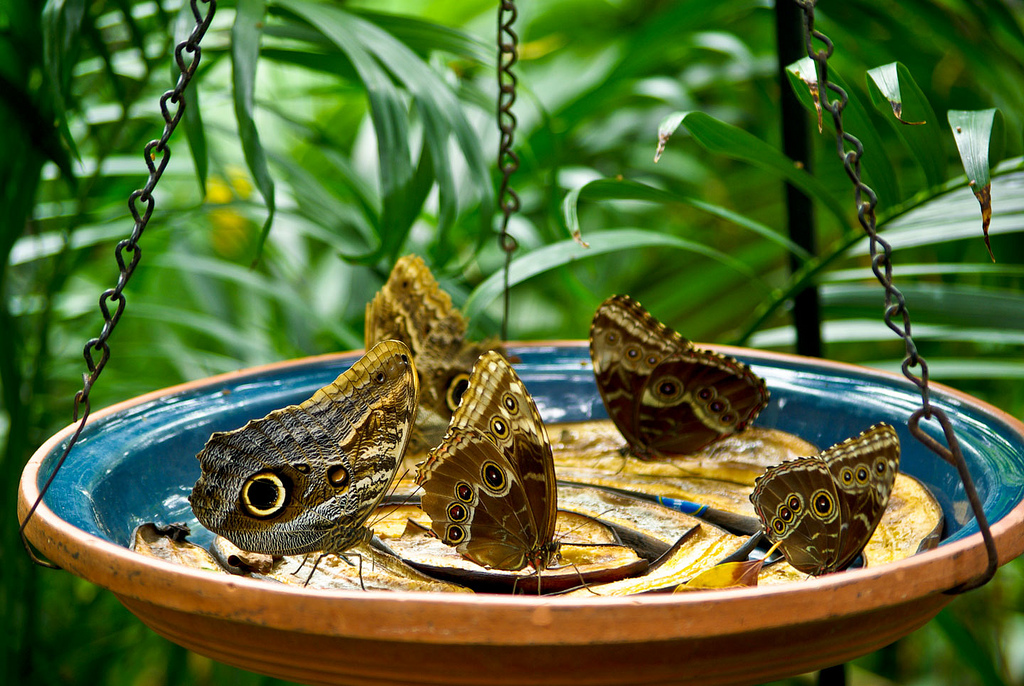
Remember that each native plant you add makes a difference, regardless of your garden’s size. Even a single passionflower vine can support multiple generations of gulf fritillary butterflies, while a small patch of milkweed might nurture dozens of monarch caterpillars.
Your wildlife garden becomes part of a larger habitat corridor connecting green spaces throughout your neighborhood and beyond.
As your garden grows, you’ll discover the profound satisfaction of participating in nature’s rhythms — watching parent birds bring caterpillars to nestlings, observing butterflies progressing from egg to chrysalis to adult, or experiencing the joy of seeing a new bird species discover your garden for the first time.
Beyond creating habitat for wildlife, you’re creating a space for human connection with the natural world — perhaps the most valuable outcome of your wildlife gardening journey.
As your garden grows, you’ll discover the profound satisfaction of participating in nature’s rhythms — watching parent birds bring caterpillars to nestlings, observing butterflies progressing from egg to chrysalis to adult, or experiencing the joy of seeing a new bird species discover your garden for the first time.
Beyond creating habitat for wildlife, you’re creating a space for human connection with the natural world — perhaps the most valuable outcome of your wildlife gardening journey.
Featured Image: Florida Fawn, by NoelleSWard – Own work, CC BY-SA 4.0, Link
Last update on 2025-08-06 / Affiliate links / Images from Amazon Product Advertising API
This product presentation was made with AAWP plugin.

You’re so awesome! I don’t believe I have read a single thing like that before. So great to find someone with some original thoughts on this topic. Really.. thank you for starting this up. This website is something that is needed on the internet, someone with a little originality!